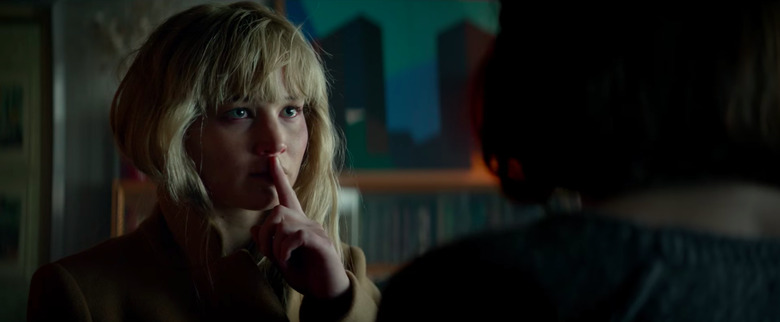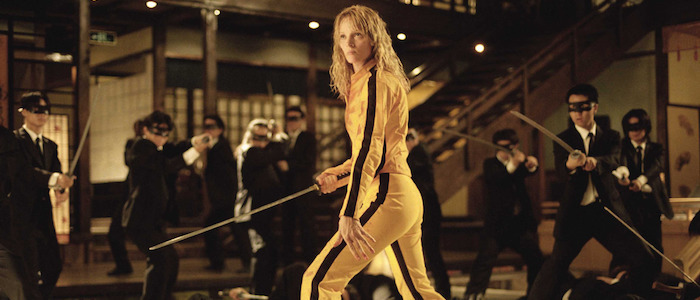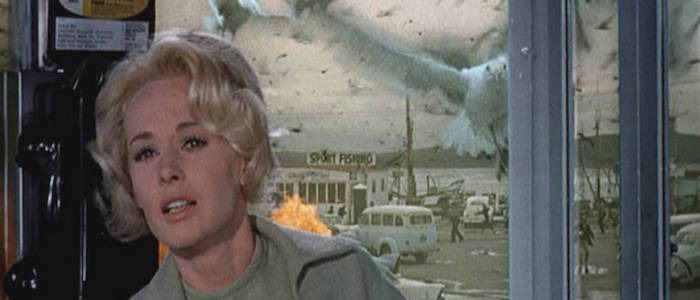The Complex Dynamic Between Female Muse And Male Filmmaker
Shelley Duvall's frantic, desperate face throughout almost the entire runtime of director Stanley Kubrick's adaptation of The Shining will forever be burned in my memory. Not only because it's brilliant and deeply unsettling (as is the film). It's also because amid that is the actual terror and sheer exhaustion Duvall experienced while having to deliver and re-deliver countless takes of her character being emotionally battered to the point where, to the actress' own admission, it had become "excruciating." Further, she felt no vindication for all that effort as the conversation around the film later centered on its male auteur. "The reviews were all about Kubrick, like I wasn't there," Duvall told Roger Ebert back in 1980.
This is an all too familiar position that many actresses find themselves in for the sake of authenticity, a sense of suffering that almost always serves as an impetus for the female character's eventual empowerment. While the character's self-actualization is an important one — apparently at whatever cost — there is much to be said about how a male filmmaker interprets and navigates female characters whose bodies are first consumed by audiences before they utter even a single line of dialogue. That said, they are either weaponized, brutalized, lusted after or a combination of all these things.
But those aren't conditions that a male filmmaker often considers when it comes to his female muse, which indicates a lack of partnership in the portrayal that is more prevalent between a male filmmaker and a male muse. As a result, the character is at risk of becoming compromised through the male gaze. With all of this in mind, let's explore some of the most renowned female muse/male director pairings on screen.
Muse: Jennifer Lawrence
Director: Francis Lawrence
Though she had previously been nominated for an Academy Award for Winter's Bone, many audiences were first introduced to then 21-year-old Jennifer Lawrence through the Hunger Games series. In the dystopian adaptation (and its subsequent 3 sequels directed by Francis Lawrence), she plays the resilient and resourceful teenage heroine Katniss Everdeen who, despite her remarkable courage in the face of political terror, is quite innocent. Her attire is defined by her warrior sensibilities — several layers, long pants, and a backpack filled with makeshift weapons including her signature bow and arrow.
It is an empowering portrayal that, while Katniss is thrust in the middle of a dangerous situation well beyond her years, doesn't forget to remind us that she is a mere teenager forced to weaponize herself for the sake of her own survival. The dichotomy of her circumstances versus her maturity and age is never suppressed, but rather used as a tool to highlight the intensity — and frankly, the absurdity — of her surroundings. As a result, Katniss always seems authentic as a character.
Flash forward six years later. Jennifer Lawrence, now 27, has portrayed several women who are years older than her and been paired with leading men who are sometimes almost two decades her senior (including Joy and American Hustle). She teams up once again with Francis Lawrence for the new spy thriller, Red Sparrow. This time, gone is all the innocence her character struggled to hold on to in Games. Now, Jennifer is a bonafide star on the opposite end of her 20s with an Oscar on her shelf and seemingly still a point to prove. Meanwhile, Francis was clearly more than eager to oblige, presenting his muse now as Dominika Egorova, part sexy vixen spy/part victim who's been physically and sexually abused and in turn uses her body to seduce and manipulate her male prey (including one played by her 43-year-old love interest, Joel Edgerton).
It's uncomfortable to watch at times and reminds me of that moment in seemingly every female pop star's career when she goes from innocent songstress to a leather-wearing, midriff-baring "icon." Especially because both Jennifer's Games and Sparrow roles could also be a devolution of the same character, it drives an alarming impression that the woman has survived this long at the sacrifice of her own body. That is most evident in two scenes: when Dominika is sexually assaulted in a hotel room after her own seduction went awry and when she strips naked and poses full straddle in front of her class at "whore school," where she's taught how to use her body as a sexual trap. This latter scene is especially gratuitous as it does absolutely nothing to service the plot or the character. Rather, it seems only to reinvent the actress in her more "daring" and "riskiest" role yet — seemingly catapulting her into a new league.
Muse: Uma Thurman
Director: Quentin Tarantino
Uma Thurman had been acting on screen for a whole 10 years before she started teaming up with Quentin Tarantino. Her career had featured several popular films, including Jennifer 8, Robin Hood, and Final Analysis, Tarantino's career had far fewer credits, but had been marked by two iconic bullet points: True Romance (which he wrote) and Reservoir Dogs. Hollywood had failed to see the star power Thurman had (typical for many actresses), but that was rectified when she starred in Tarantino's Pulp Fiction in 1994. She plays Mia Wallace, the sly, coked-out wife of crime boss Marsellus (Ving Rhames). She is mostly known for two now emblematic scenes: the diner dance with Vincent Vega (John Travolta), and when she's lying on the floor of drug dealer Lance's (Eric Stoltz) apartment after overdosing, with her blouse ripped open while Vincent tries to stab her back to life with a shot of adrenaline. The latter is an utterly ridiculous scene, but in the Tarantino universe, it actually does make sense and service the plot.
But then came Kill Bill Vol. 1 almost a decade after that in 2003 and Kill Bill Vol. 2 the following year. Thurman was back with Tarantino once again in the driver's seat, this time playing the lead. Thurman is simply known as The Bride, a woman who had suffered such extreme violence a the hands of her former teammates (she's a professional assassin) that she is rendered comatose. She wakes up unable to move her body in a hospital bed, no longer pregnant, and with fragmented memories of the orderly having sex with her seemingly lifeless body. Top that with the report that Tarantino coerced Thurman into getting behind the wheel of a car for a dangerous driving scene, which crashed and left her with injuries, and it just further goes to show the lengths some actresses will go to bring a director's vision to screen.
Like Mia, The Bride must find a way to return to her life after a near-death experience. For her that means opening the gates of hell on the people who violated her — from the orderly to each and everyone one of the suspects in that church. It's revenge she craves, and it's revenge she ultimately gets.
What's interesting about both of these roles, though, is that their bodies are used as either weapons or, in the case of Pulp, a mere object to expose in order for the man to save her life. Though, it is Mia who almost destroys her own body, which somehow makes her more interesting. But for The Bride, she literally must be battered, abused and left for dead, (though all of this is shown in flashbacks), so that her self-actualization and empowerment can be understood. While I love a great revenge film (and this one is), would it have been so implausible to see The Bride raise hell on her enemies without having to succumb to such extreme abuse first?
Muse: Tippi Hedren
Director: Alfred Hitchcock
Back in the 1960s, things were even more challenging for actresses under the studio system. The directors were all male. The studio heads were all male. The actresses had pretty much zero rights when it came to how they were consumed on screen, the progression of their characters, and their opinion on the portrayal of the character. As such, someone like Tippi Hedren, one of Alfred Hitchcock's "girls," was merely a prop, though she starred in not one but two of his most famous films: The Birds and Marnie.
In The Birds, Hedren plays Melanie Daniels, a young blonde socialite who gets put through the ringer by killer birds and is also the object of Mitch Brenner's (Rod Taylor) obsession in the midst of sheer terror. In Marnie the next year, she plays the titular embezzler who is blackmailed into marrying Mark Rutland (Sean Connery) after he finds her out. Yes, even when the woman seems in control (albeit as a criminal, but still), she is at the mercy of a man. That's stacked with the fact that she is compelled to the brink of suicide over a trauma from her past. Because when it comes to the strength of female characters through the lens of male storytellers, their self-actualization only arrives after contending with significant ordeal (often physical or sexual).
In 2016, 36 years after Hitchcock's death, Hedren claimed that the director repeatedly sexually harassed her — treating her like property. Among other things she reveals in her book, she writes, "He suddenly grabbed me and put his hands on me. It was sexual, it was perverse, and it was ugly, and I couldn't have been more shocked and repulsed. The harder I fought him, the more aggressive he became. Then he started adding threats, as if he could do anything to me that was worse than what he was trying to do at that moment." Then, she claims that he threatened her career.
Though all these actress/filmmaker relationships resulted in solid to iconic films and performances, there is something to be said about how the dynamic between the two has evolved throughout the years — and how much women have to endure just to be considered worthy enough to be a muse.



